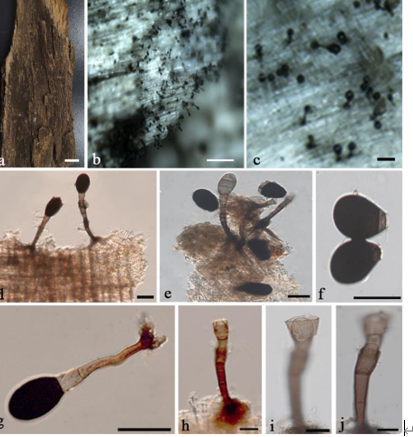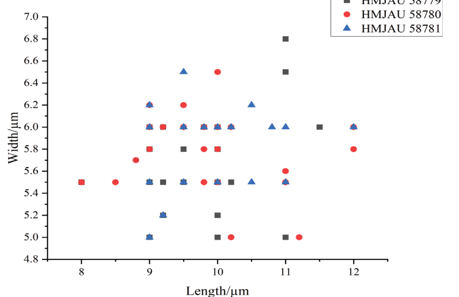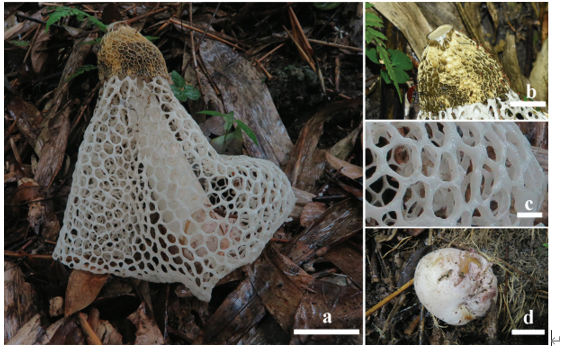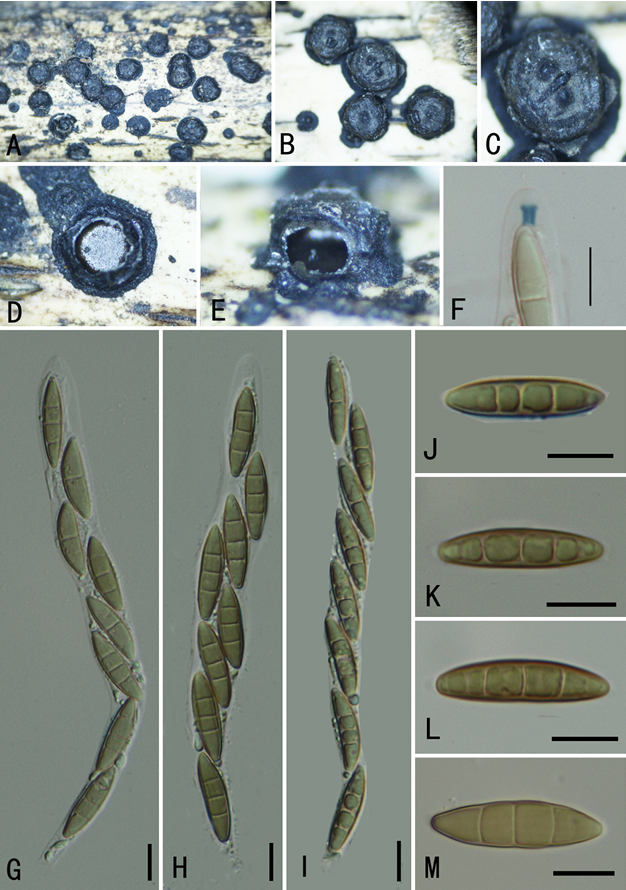Conidiobolus variabilis B. Huang & Y. Nie, sp. nov. 2020
MycoBank No: 835125; Facesoffungi: FoF 08144
Holotype: China, Anhui: Ma’anshan City, Hexian County, Jilongshan National Forest Park, 31°48'1"N, 118°12'19"E, from plant debris, 23 Dec 2017, Y. Nie (holotype HMAS 248723, ex-holotype culture CGMCC 3.16015 (= RCEF 6540), GenBank: nucLSU = MT250085; TEF1 = MT274289; mtSSU = MT250087).
Morphological description
Colonies on PDA at 21 °C after 3 d white, reaching ca. 41–48 mm in diameter. Mycelia colourless, 6–11 μm wide, rarely branched at the colony edge. Primary conidiophores unbranched and producing a single globose conidium, colourless, 60–200 × 9–15 μm, without an upward widening near the tip. Primary conidia forcibly discharged, globose, subglobose, pyriform to oboviod, 31–55 × 25–40 μm, with tapering and pointed papilla, 3.5–9 × 8–13 μm. Secondary conidia arising from primary conidia, similar to, but smaller than primary ones, forcibly discharged. On 2% water agar, microconidia rarely observed, globose, subglobose to ellipsoidal, 10–12 × 9–14 μm. Resting spores not observed.
Habitat: from plant debris
Distribution: Anhui Province, China.
GenBank Accession: nucLSU MT250085; EF-1α MT274289; mtSSU MT250087
Notes: Considering the large size of primary conidia, Conidiobolus variabilis sp. nov. is allied to C. coronatus (Cost.) Batko (14.5–38.5 × 17–48.5 μm), C. macrosporus Srin. & Thirum. (38–45 × 48–54 μm) and C. utriculosus Brefeld (25–35 × 37.5–51 μm). It is distinguished from C. coronatus by its various shapes of primary conidia and the absence of villose spores. It differs from C. macrosporus by its longer primary conidiophores and the absence of resting spores (Batko 1964, Srinivasan and Thirumalachar 1967). It is differentiated from C. utriculosus by the shapes of primary conidia and the absence of zygospores. Phylogenetically, C. variabilis sp. nov. is basal in clade I and distantly related to C. coronatus and C. macrosporus.
Reference: Nie Y, Cai Y, Gao Y et al. (2020) Three new species of Conidiobolus sensu stricto from plant debris in eastern China.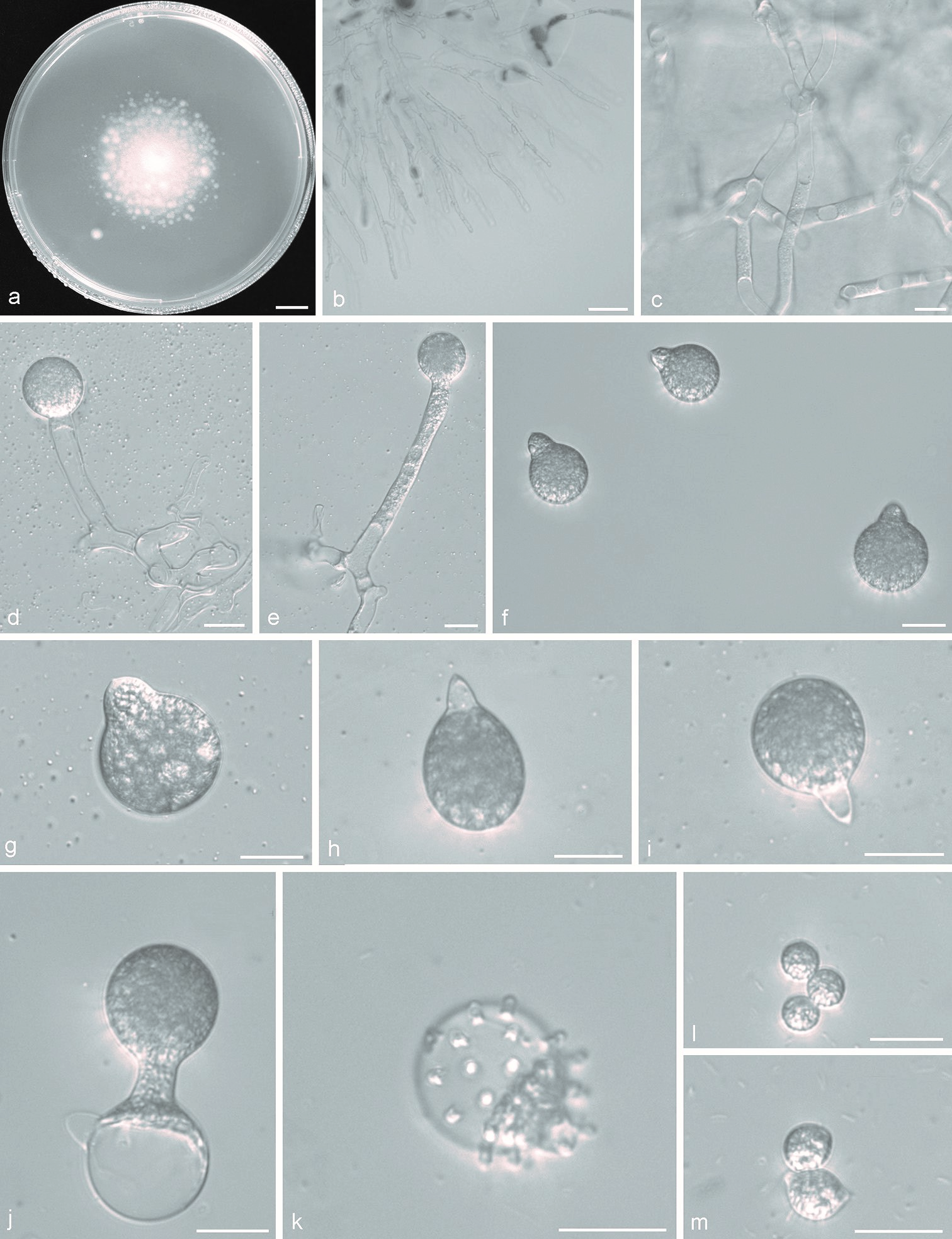
Conidiobolus variabilis sp. nov. a Colony on PDA after 3 d at 21 °C b mycelia rarely branched at the colony edge c mycelia d, e primary conidiophores bearing primary conidia f–i primary conidia with different shapes j secondary conidia arising from primary conidia k microconidia arising from conidia l globose microconidia m ellipsoidal microconidia. Scale bars: 10 mm (a); 100 μm (b); 20 μm (c–m).


